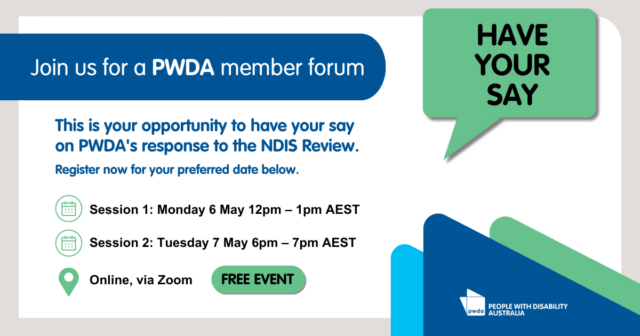By Kalli Spencer
Financial toxicity is an expansive term which refers to the economic ramifications and subjective burden brought on by a cancer diagnosis and treatment1. Escalating costs include direct, or out of pocket (OOP) payments, as well as indirect costs associated with foregone earnings for both patient and caregiver, which amplify financial burden. The notion of financial toxicity arose from fears that escalating costs of anti-cancer medications coupled with insurers’ increased cost-sharing with patients may lead to undesirable outcomes similar to traditional toxicities associated with treatment, such as pain or nausea2. The cost of severe economic stress that can accompany cancer treatment is an emerging challenge now facing oncologists. The American Society of Clinical Oncology produced a consensus statement in 2009 asserting that discussions between patients and physicians about treatment costs are a crucial element of high-value oncological care3.
The prevalence of financial toxicity is believed to be rising overall due to various factors, such as an ageing population approaching retirement, increasingly expensive cancer treatments, and an altering insurance landscape that increasingly shifts cost responsibility to patients4. Further compounding the complexity is the fact that researchers have, to date, measured financial toxicity in numerous ways: monetary measurements (for example, OOP costs sometimes as a proportion of personal income); prevalence rates of objective responses to financial strain (for example, increase in debt levels, reduction in leisure spending, declaration of bankruptcy); or subjective perceptions of financial burden and possible effects on health-related quality of life (QoL)1.
Oncologists’ elevated awareness of the issue is probably due to growing cognizance that financial difficulties can result in poorer physical health states. Financial toxicity can be a risk factor for a number of adverse oncological outcomes including heightened emotional and psychological distress, poorer QoL, worsened symptoms and even a greater risk of death. Patients enduring financial difficulties are less likely to adhere to prescribed therapies and follow-up monitoring, which could lead to greater rates of cancer relapse and death. Another proposed mechanism is psychological stress can promote tumour growth, invasion and metastasis through stress hormone and possibly immune-mediated effects. Less than one third of study participants had actually discussed costs with their oncologist, despite the fact that 60% of patients had a positive outlook regarding cost discussions.
Recently the escalating costs of care with particular reference to prostate cancer stem from the use of technologies such as robotic surgery and costly novel anti-androgen medications (enzalutamide, abiraterone). The risk of financial toxicity is greater in the first months following surgery amongst men who have undergone prostatectomy, whereas those who have completed radiotherapy might have persistent risk for years. A unique aspect of prostate cancer is that most people are cured of their disease; however, treatment-related negative effects, such as erectile dysfunction and urinary incontinence, can result in enduring, associated medical costs for over ten years. Many men are diagnosed while they are employed, which can result in workplace disruptions and extended opportunity costs. This is reflected in lost salaries or lowered productivity due to missed work owing to primary cancer treatment or persistent symptoms.
One of the assessment tools is the Comprehensive Score for Financial Toxicity (COST) which is an evaluation of patient financial strain based on 11 questions each with a five-point Likert scale5. COST has been suggested as a standardized instrument for future studies and is becoming popular as a preferred screening tool in financial toxicity research.
An Australian online cross-sectional survey has been developed combining pre-existing economic measures and new questions6. The key outcomes were self-reported out-of-pocket costs of prostate cancer diagnosis and treatment, fluctuations in household finances and employment status. The research found that men diagnosed recently (within 16 months of the survey) reported spending a median of AU$8000 for their cancer treatment while 75% of men spent up to AU$17 000. The cost of treating their prostate cancer caused twenty per cent of all men ‘a great deal’ of distress. With 5% of men spending $250 or less in out-of-pocket expenses and some men facing extremely high costs, the findings suggest a large variability in medical costs for prostate cancer treatment. Some men also had other co-morbidities which may exacerbate the financial burden further. On average, respondents in paid employment at diagnosis stated that they had retired 4-5 years earlier than planned.
It is important to identify patients with prostate cancer under financial strain, as the health-care team might have opportunities to help these individuals and alter their mortality risk. It will also assist with treatment adherence. Anticipatory guidance on the possibility of significant medical costs can reduce adverse psychological effects. Cancer treatments can be extended and fragmented across health services and unanticipated medical and related expenses can quickly accumulate6. Understanding these impacts is vital to educate patients about treatments, to support personal health care choices, to assist with planning and implementation of social support services and enable sustainable and equitable health policy. The bundling of visits to numerous medical experts on the same day, tele-health appointments and automatic referral to social work are some examples of strategies including more financially prudent interventions which could be considered more routinely for men who experience prolonged post-treatment adverse effects.
When addressing supportive care needs, it is becoming increasingly important to bear in mind the patient’s financial status and where necessary, provide sufficient support and/or referrals to local support agencies6. Strategies should encompass the entire healthcare team (including financial counsellors, nurse and social worker) not just the urologist and oncologist. When diagnosed with prostate cancer men should be made aware of their financial options and the sources of help that may ameliorate this distress and avoid decisional regret later. Issues for healthcare providers that require attention include their discomfort having these conversations, a sense that such counselling is not within their ambit, and the lack of transparency regarding what the out of pocket costs will be7.
Financial toxicity is set to continue escalating with new therapeutic development, the increasing prevalence of cancer and greater survivorship7. Practical communication tools should be considered to pave the way for proactive dialogue and track changes over time.
References:
1. Imber BS, Varghese M, Ehdaie B, Gorovets D. Financial toxicity associated with treatment of localized prostate cancer. Nat Rev Urol 2020; 17: 28.
2. Zafar, S. Y. & Abernethy, A. P. Financial toxicity, part I: a new name for a growing problem. Oncology 2013 27: 80-149.
3. Meropol, N. J. et al. American Society of Clinical Oncology guidance statement: the cost of cancer care. J. Clin. Oncol 2009. 27: 3868-3874.
4. Hartman, M., Martin, A. B., Espinosa, N. & Catlin, A. The National Health Expenditure Accounts Team. National health care spending in 2016: spending and enrollment growth slow after initial coverage expansions. Health Aff. 2017 37, 150-160.
5. de Souza, J. A. et al. The development of a financial toxicity patient-reported outcome in cancer: the COST measure. Cancer 2014: 120, 3245-3253.
6. Gordon G.L., Walker S.M., Mervin M.C., Lowe A., Smith D.P., Gardiner R.A., Chambers S.K. Financial toxicity: a potential side effect of prostate cancer treatment among Australian men. Eur. J. Cancer Care 2017; 26: e12392.
7. Sumeet K. Bhanvadia et al. Financial toxicity among patients with prostate, bladder, and kidney Cancer: A systematic review and call to action. Eur Urol Oncol 2021; 4:396-404.
About the Author

Kalli Spencer
MBBCh, FC Urol (SA), MMed (Urol), Dip.Couns (AIPC)
Kalli is an internationally renowned Urological Surgeon, specialising in oncology and robotic surgery. He trained and worked in South Africa, before relocating to Australia where he has worked at Macquarie University Hospital and Westmead Hospital. His passion for what he does extends beyond the operating room, through public health advocacy, education and community awareness of men’s health, cancer and sexuality.
Kalli has been involved with the Prostate Cancer Foundation of Australia for many years, advocating for improved cancer care and facilitating community prostate cancer support groups.






